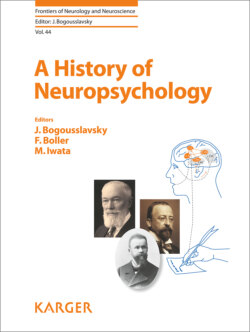Читать книгу A History of Neuropsychology - Группа авторов - Страница 67
На сайте Литреса книга снята с продажи.
Abstract
ОглавлениеStudies of alexia and agraphia have played historically important roles in efforts to understand the relation between brain and behavior. In the second half of the 19th century, works by Paul Broca and Carl Wernicke led to the concept of delimited cortical centers in the left cerebral hemisphere concerned with discrete aspects of spoken and written language. These specialized centers were linked by white matter pathways. Charlton Bastian, Jean-Martin Charcot, Sigmund Exner, and Jules Dejerine championed center–pathway models of reading and writing. Dejerine played a dominant role, rejecting the idea of a left frontal lobe center that mediated writing and proposing a unique, specialized role for the left angular gyrus in both reading and writing. In 1891 and 1892, he detailed the symptoms of alexia and agraphia that resulted from injury to the left angular gyrus and from the isolation of the left angular gyrus from visual input required for reading. During the early 20th century, his work and that of other so-called diagram makers was confronted and largely discredited by Pierre Marie, joined later by Henry Head and Kurt Goldstein. In the 1960s, the center–pathway model was resurrected and refined by Norman Geschwind. He drew upon foundational works of Dejerine, Hugo Liepmann, and others to describe syndromes resulting from cortical disconnections and, in doing so, helped to establish a framework for the modern discipline of behavioral neurology.
© 2019 S. Karger AG, Basel
